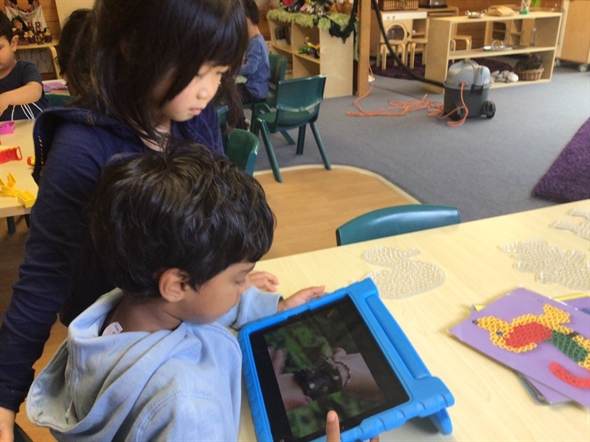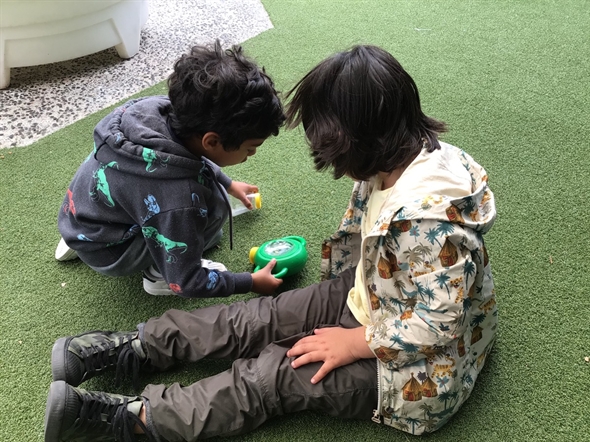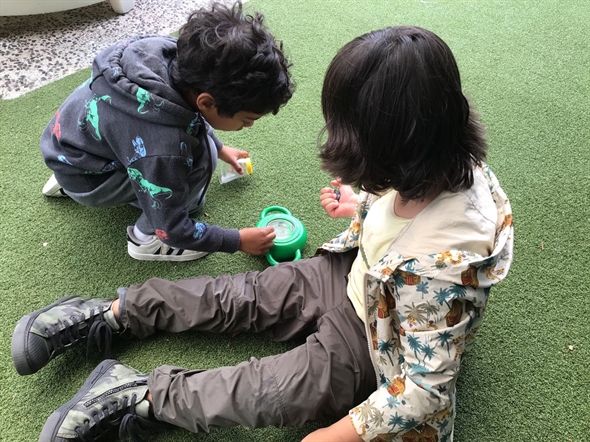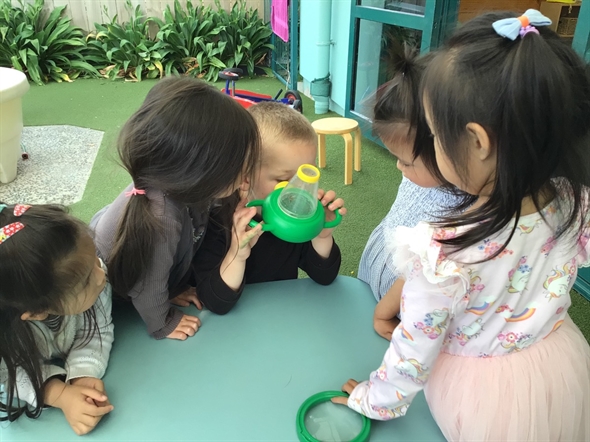Using Technology in Early Childhood Education
Friday, 4 December 2020
Using Google Lens for research
Saturday, 21 November 2020
Technology Integration II
The next 2 levels of the SAMR model is Modification and Redefinition.
Redefinition
- How does the tool you use support different cognitive levels?
- Which tool help you address lower order thinking skills?
- Which can help challenge children's higher thinking skills?
Wednesday, 18 November 2020
Project Insect - Collaborative learning
Attracting Insect

Following M's interest in the stag beetle, our room had a lot of activities investigating into insects, M got the children's iPad and researched more into the stag beetle, learning how it moves and it's habitat.
Then someone found a dead bee and a group of children took a closer look.
The children started looking for different insects in our garden, sometimes they looked really hard but couldn't find any insects.
M and E had an idea!
They put some water and a leaf in the explorer lens,
'the insect can drink water from this,' E said.
'I put a leaf so the insect will come,' M added.


M collaborate with his friends to make sense of his interest and the living world. They explore, find answers, and discuss their findings.
Keep an open mind and let M explore, provide more opportunities to learn about M interest and possibly show what he had learned.
Frameworks
Te Whāriki (with Examples) (Early Childhood)
- Curiosity about the world and the ability and inclination to share interests with others.
- Confidence in exploring, puzzling over and making sense of the world, using such strategies as setting and solving problems, looking for patterns, classifying, guessing, using trial and error, observing, planning, comparing, explaining, engaging in reflective discussion and listening to stories.
- Curiosity and the ability to inquire into, research, explore, generate and modify working theories about the natural, social, physical, spiritual and human-made worlds.
Tuesday, 10 November 2020
Project Insect - Using technology to extend an interest
We found a new insect!

Jen, Janny and Mark found a dead bee in the garden. We carefully picked it up and put it in the bug viewer to take a closer look. "How many legs has it got?" "What colour is it?" were the questions we asked.
"The bee has wings."
"We’ve got 2 legs."
"I found a mosquito." P ran to me and said, then we grabbed the iPad to have a closer look.
"It’s green."
"It has 6 legs."
"Is it a mosquito?"
Children got more curious in different types of critters found in the garden, and with technology, we have the opportunities to take a closer look and find out more about our insects.
To use technology to discover more about a wide range of insects, and keep hunting for small living creatures in our garden.
Sunday, 8 November 2020
Technology Integration I
Dr. Ruben Puentedura developed the SAMR model as a way for teachers to evaluate how they are incorporating technology into their instructional practice. You can use SAMR to reflect on how you're integrating technology into your classroom. Is it an act of Substitution? Augmentation? Modification? Or Redefinition?
Turning SAMR into TECH: What models are good for
A fun way to explain the SAMR model:
In a preschool setting, let's say drawing, apps like draw & tell is a Substitute if children only draw on a blank page. It then becomes Augmentation when children use the feature in the app, such as stickers, patterns, which is very hard to do in hand drawing. Children can also record their voices to tell their story about what they created, it then becomes a video and can be exported to share with parents.
Tuesday, 3 November 2020
Project Bilingual - Apps (Chatterkid & Book Creator) to enhance ESOL learning
Monday, 2 November 2020
Games for STEAM to learn problem solving & coding
Code.org is a fun site for students from elementary to high school to learn coding, take a look at the courses.
Star War Coding is one of the popular ones.
Great problem solving games




